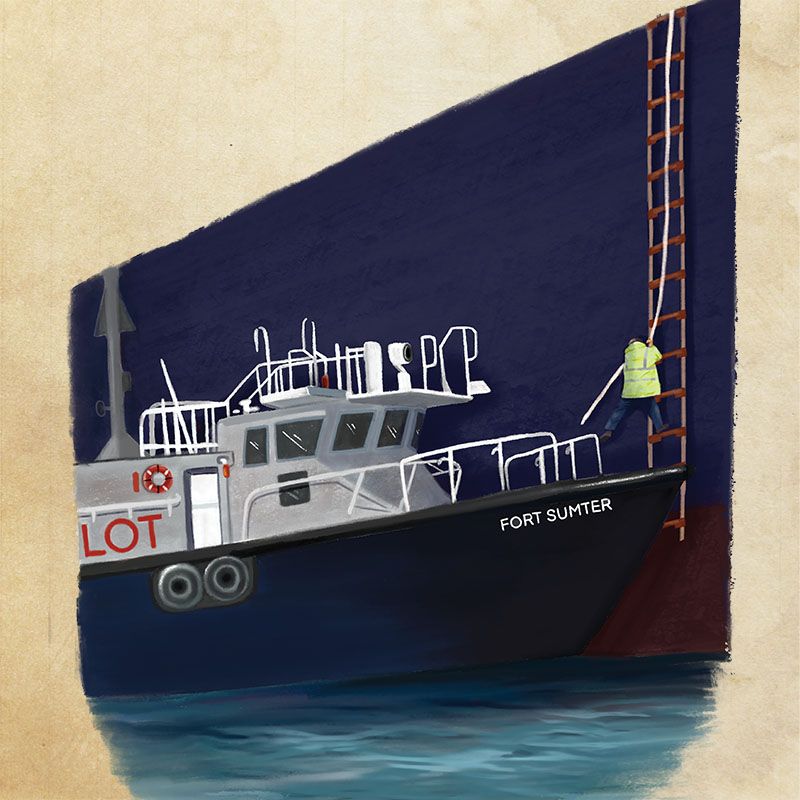How they navigate those big ships into port

By law, every vessel involved in trade, foreign or domestic, must enter and leave the port with a licensed harbor pilot aboard. The sailor must possess the high-level training required to command a boat of any size, not to mention invaluable knowledge of local waters. To top it off, the pilot boards a ship by climbing a rope ladder dangling down the side. Learn more about this tough job that’s not for the faint-hearted but is crucial for our port
CLOSE-KNIT CREW Handling some 4,500 ship movements a year, the Adger‘s Wharf pier is home to three custom pilot boats with captains and crew, a 24-hour communications center, and maintenance facility. Twenty full branch pilots are licensed to guide vessels of any size. Historically, older generatioms taught younger generations the trade. Today, this practice has been replaced by a lengthy apprenticeship program. Currently, three sailors are working through the rigorous on-the-job training required for full branch pilots.
SAIL HO! In the early 1700s, from their outpost on Sullivan’s Island, pilots raced to meet incoming ships. Whoever reached the boat first won the job. It wasn’t until 1890 that competition was set aside and sailors banded together to form the Charleston Branch Pilots’ Association with one central location at Adger‘s Wharf, which remains its home base 130 years later.
CROSSING THE BAR In earlier centuries, instead of a single, deep shipping channel, there were several channels of varying depths, which crisscrossed an ever-changing line of sandbars, making entering and leaving the harbor extremely precarious. It took someone with a solid familiarity of the local waters to help a ship “cross the bar” safely. Even modern technology can’t replace the specialized understanding of tides, currents, depths, and shoals that aren’t always reflected on nautical charts. This indispensable first-hand knowledge is what the harbor pilot brings to the helm.
PERFECT TIMING Today, container ships are so large that pilots meet some incoming vessels 15 miles offshore. Getting the pilot aboard is a delicate operation that requires expertise from the pilot boat captain and crew. First, the two boats must synchronize their speed. The pilot boat then hugs the side of the vessel so the pilot can board—deftly gauging ocean swells and motion—until he can safely grab the dangling boarding ladder and ascend the side. Conversely, a pilot departing a ship climbs down the ladder onto the awaiting boat.
FAMILIAR FRIENDS While early pilot boats were single-masted cutters fitted with sails, today they are strong, diesel-powered boats marked with the word “pilot” written on the sides. At night, they’re recognizable by special navigation lights. The comforting rumble of their engines as they head across the harbor is as familiar a sound to Charlestonians as St. Michael’s bells.